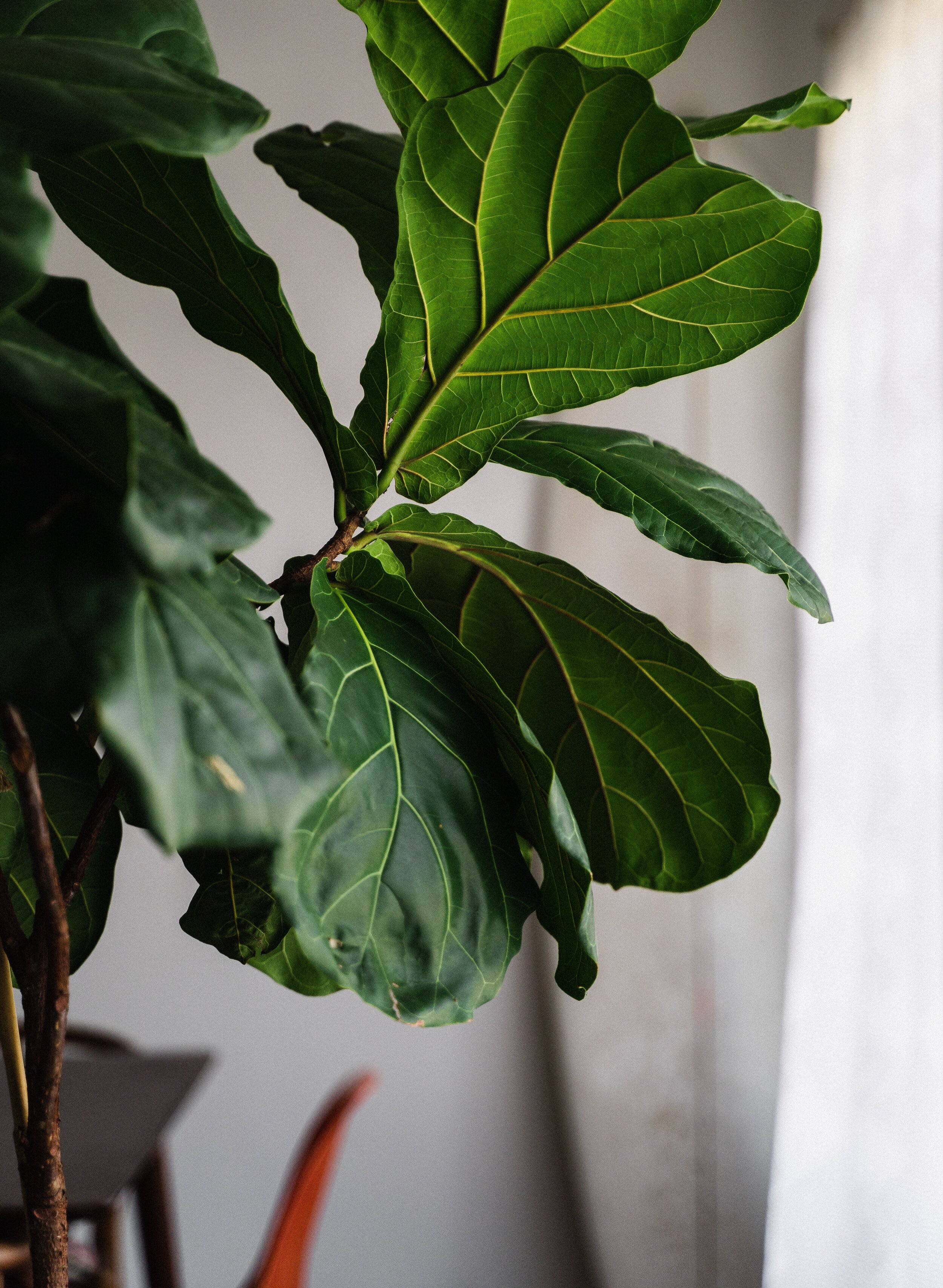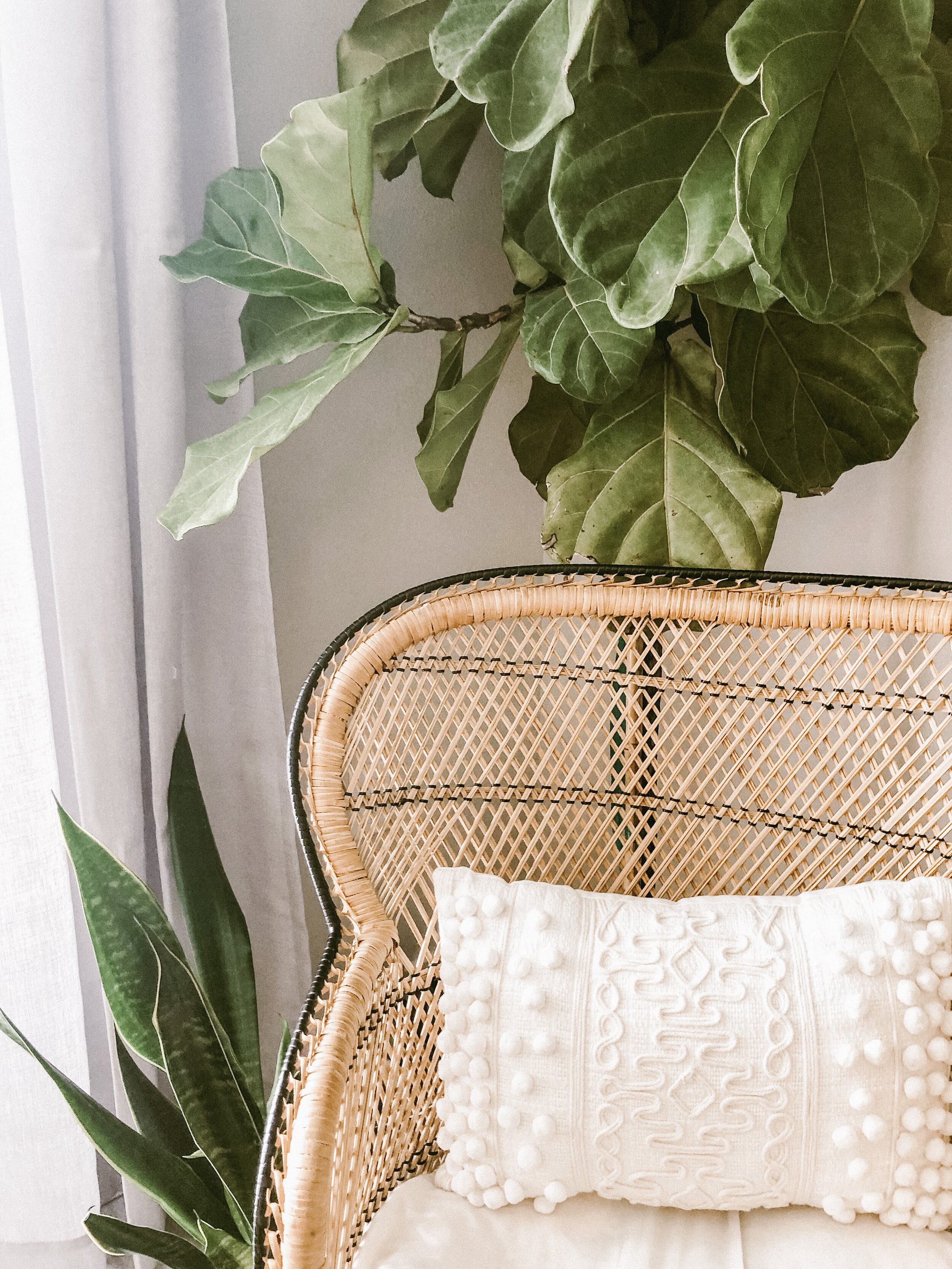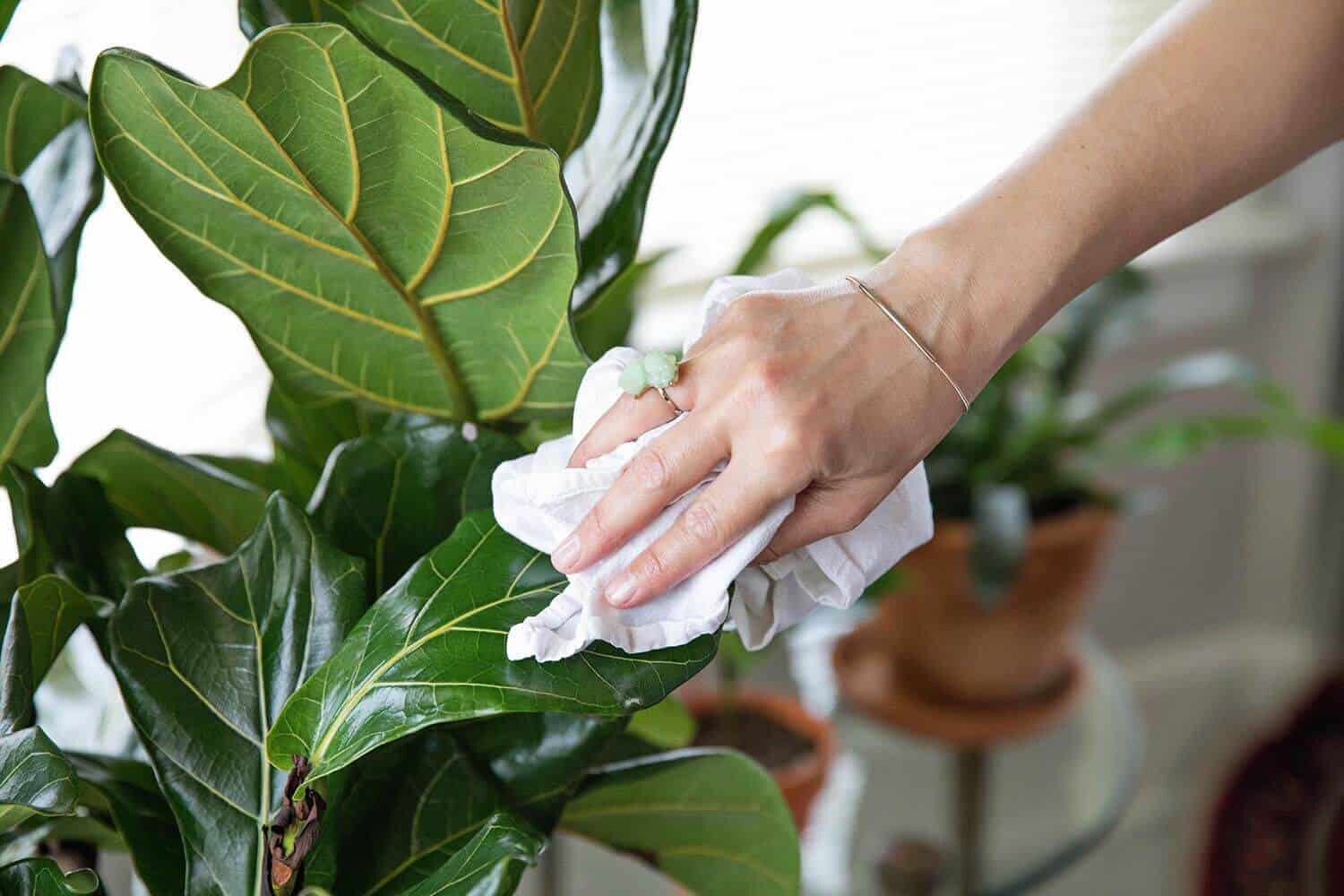The Secret(s) of the Fiddleleaf Fig
“I love plants! But my fiddleleaf fig is dying. What do I do?”
This is the number one comment I hear from people when I tell them I work with plants for a living.
It’s usually accompanied by a sad expression, wistful eyes, and the unmistakable air of disappointment.
This breaks my heart, so I’m here to put an end to it once and for all! Read on, plant friends, for my tips on keeping that elusive beauty thriving.
The Story of a Diva:
THAT’S MS. FIG TO YOU!
One of the most important things to consider about all plants (and one of the secrets to unlocking their potential), is to understand where they come from.
Until humans learned how to grow them for indoor use, all house plants were like any other - you find them growing in conditions they love, and nowhere else.
Our friend Ms. Fig (Ficus lyrata) originally hails from western Africa, where she thrives in coastal rainforests. This air is warm and humid, and is characterized by shifts in wind that bring wetter and drier air in different parts of the year. She receives lots of bright light, but it’s filtered through the taller trees that reach above her.
Even though she lives in a rainforest, that doesn’t mean her roots are always wet. Rainforests aren’t swamps. Think of a damp sponge that you’ve just lightly wrung out - it’s not dripping with moisture but you would still characterize it as wet if someone snuck up behind you and tossed it down the back of your shirt. (I swear I’ve never done that...)
So what does this mean?? Let’s pull out the most important bits from the above:
Air: warm and humid
Light: bright, but indirect (filtered like through a sheer curtain)
Soil: fertile, well drained
Water: moist (not wet) underneath, drier on top
Sounds just like the inside of your house, right?? No? I think we’re on to something… Let’s fix that!
Keep reading for my SECRET to keeping these puppies alive.
Just Give Her Whatever She Wants
(aka Ms. Fig’s Diva Rider)
Similarly to Beyonce (who must have rose scented candles in her dressing room), Kanye (who can’t go onstage without a bowl of Sunkist salted pistachios), or Katy Perry (who needs a fresh flower arrangement with NO CARNATIONS backstage), Ms. Fig is a true Diva. She has lots of demands that must be met if you want her to be at her best while she’s away from her natural habitat, but if you can make her happy she’s truly spectacular.
(Celebrity demands alleged here. I know you want to click - but in a new tab please, we have to learn about plants now!!)
Let’s tackle her needs one at a time. Green M&Ms not included.
LIGHT
This one can actually be kind of tricky. If you don’t have access to bright light in your home (I don’t), you may be out of luck. She just can’t get the chlorophyll she needs to thrive without it. If you won’t be deterred, you can get yourself a grow light and train it on the leaves. Make sure this bulb is close to the leaves but not touching. The light you buy will have specific instructions.
(The cutest ones are available from our friends at Modern Sprout, or you can buy a grow bulb on Amazon and put it in a nearby lamp!!)
If you DO have lots of bright windows, I’m jealous. And you’re in luck! If your window is south or west-facing (brighter light), place Ms. Fig a few feet back from the window. If you have sheer curtains, or you’re facing north or east (weaker light), she can get right up in there. You may be surprised to learn that if she is in bright, hot, direct sun, her leaves will burn. Remember those overhead trees she loved! She’s like your friend (me) who is fair-skinned but loves the sun, and the filtering is like adding some sunscreen.
Image: terrain
AIR
Ms. Fig has very specific needs - she wants humid, warm air. Please make sure that you keep her (and all of your other plants) away from air vents and drafty spaces. Sometimes even single-paned windows that are cold or warm to the touch can hurt nearby leaves of finicky plants. Ms. Fig is such a creature.
If your air is really dry, you may want a humidifier not only for your plants but for yourself! The other easy way to add humidity is to give Ms. Fig a light misting every couple of days.
SOIL
Take a moment to venture back in your mind to Ms. Fig’s native rainforest. When you take your mental walk, you can imagine that the ground is covered with lots of dead leaves, sticks, branches, fungi, bugs, etc.
This type of soil is incredibly fertile. All of those things break down and create the world’s best organic fertilizer. I’ll talk about why you want organic fertilizer in a later post. For now just buy this and use it on all of your plants.
WATER
If you’ve skipped everything else in this post, and only read this part, you’ll...still fail. Please go back and read the rest.
BUT THIS IS THE MOST IMPORTANT PART: MY SECRET TO SOLVING THE FIDDLELEAF FIG!
Get ready…. Water her from the bottom!
Her big dirty secret is that she HATES when you water her from the top. In typical Diva fashion, her hair is very important to her and it must be dry. In plant-speak, this means that the TOP 3 - 5 INCHES of soil need to stay dry. She drinks deep - from the bottom of the pot, not the top. Think of that forest floor again: all that fluffy, decaying stuff is on top and the water is all under the surface.
But how can you possibly make her happy? Don’t despair, I have a non-patented, easy to follow approach:
PART 1: THE SETUP
The pot and saucer situation for your fiddleleaf are really important to making her happy. Keep Ms. Fig in her plastic pot, and drop THAT into a basket or other pot with at least one drainage hole. You’ll be grateful for that plastic pot later.
Now you need a saucer. Make sure you select one that is deep enough to hold a good amount of water. (I know for a fact that these have been rigorously tested and measured because I helped!)
If you use a basket, just put your saucer inside the basket and place the plastic pot inside with it.
Image: terrain
PART 2: THE ROUTINE
Every week or so, check the top 3 - 5” of soil with the world’s greatest and simplest invention, the moisture meter. Just stick the metal end 4” down into the soil near the base of the plant. I like to mark the line with a piece of tape or sharpie for consistency. If your meter says “moist” or “wet”, wait til next week to water. If it’s “dry”, let’s get watering!
Fill your saucer with water and wait 10 minutes
After 10 minutes, check to see if the water has been absorbed into the pot.
If not, give it another 10.
If so, step 3!
If the water is gone, check the soil again with your moisture meter.
If the soil is still dry, repeat step 2.
If not, pour out any remaining water and get on with your day!
Image: terrain
PRO TIP: Another good indicator of water level is to watch the top leaves. When they begin to droop, you need to water.
ANOTHER PRO TIP: You could also plant your Ms. Fig in a self-watering pot. These types of pots are set up to water from the bottom, and have handy indicators on them to show you when you need to add water to the reservoir. Lechuza makes many good quality options, and there’s an insert you can buy here that you can drop into any pot.
Image: A Beautiful Mess
MOVING AND CLEANING
Once you’ve mastered the skills above, you can get even better results from Ms. Fig by keeping her clean and shiny. Once a month or if she’s looking dusty, wipe down her leaves with a damp cloth. This is a really meditative exercise and a great bonding experience with Ms. Fig, like petting your dog. While you’re doing this, you should be checking for any signs of pests on the leaves and stems.
You may also see that over time she begins to lean into the sunlight, because no Diva can resist the spotlight. Give her a quarter turn so she keeps a straight trunk.
Aside from watering her and giving her a slight spin, you should try to keep her in one place. Ms. Fig in particular gets accustomed to where she sits and suffers greatly from too much moving around the house. You may see some browning, leaf drop, or other signs of sadness if she is disturbed too often.
SIGNS OF TROUBLE
New leaves are turning brown and dropping: You are not watering enough. For the next week, check her more often - you may need to water more than once a week.
Old leaves are turning brown and dropping: You are watering too much. Give it a rest for a week or so and check the soil before watering again.
Top leaves drooping: Time for water!
Bugs on leaves: Wipe down the leaves with neem oil - this may also come in a spray. Follow instructions on the bottle.
Edges and tips of leaves brown: Most likely burning due to too much sunlight. If you pull her back from the light a couple feet and the leaves continue to brown, see watering notes above.
You’re at a loss and don’t want to deal with this anymore: Check out our Plant Care services page!
Fiddleleaf Fig Cheat Cheet
Ms. Fig’s List of Requirements:
Warm, humid air
Bright, indirect sunlight and lots of it
Fertile soil
The right amount of water - but you’re a pro now, no problem!
Skill level: Advanced
Cost: $$$$$
Attention: Demanding
Risk to Reward Ratio: High
Repot: Once a year
Did you like this post? Got ideas for the next one? Questions? Please let us know in the comments, subscribe, and follow us on Instagram!
To stay up to date on our articles, subscribe here:











